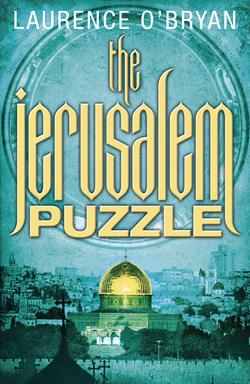Читать книгу The Jerusalem Puzzle - Laurence O’Bryan - Страница 26
21
ОглавлениеHenry Mowlam took the teabag out of his thin white plastic cup and dropped it into the stained bin. Working for the Security Service was not as glamorous as TV shows made it out to be.
He took his mid-afternoon tea back to his desk. He had a report to read. It was on one of his two smaller side screens. The report was a secure PDF, an un-printable and un-saveable document, which his password had allowed him access to. It could only be read on screen and the length of time it remained opened, and by whom, was being recorded as part of the document metadata.
The report was the latest impact assessment for a war between Israel and the US, and Iran and possibly Egypt too, as well as others, depending on which Arab governments got embroiled to prove their Islamic credentials.
Its contents were stark.
The human and economic impact of such a war would be greater than any conflict since the Second World War. Iran was a regional power now and had a standing army of 545,000 as well as a reserve of 650,000 men. It would be the largest and most advanced military force Israel had ever engaged. Israel had an active defence force of 187,000 and a reserve of 565,000. Israel’s population was 7.8 million. Iran’s 78 million.
The casualty predictions were based on a number of possible war scenarios. Even the most optimistic prediction for the loss of life in the region would be unacceptable to the public in any of the participating countries, should the information ever get out.
The second half of the document detailed the levels of long-term human and physical destruction if a limited
nuclear exchange took place. It included details of the
Israeli nuclear arsenal and an estimate of the restricted Iranian nuclear capability, currently believed to lie within their
military’s reach.
Henry was allowed to see the document only because the new remote pursuit protocol allowed him to track high-value permanent UK citizens outside the country for short durations, rather than hand over monitoring to MI6, the branch of the British Security Service focused on external threats.
The situation relating to Dr Susan Hunter, one of the UK citizens he was tracking, and the tension in Israel, where she had last been seen, necessitated he be aware of the latest intelligence for that country for his level of security clearance.
What he had to do now was evaluate the intelligence and decide how they should proceed regarding the Susan Hunter situation.
The report he had read before the war scenario document was the item he would have to take an operational decision about.
It claimed to have traced the report of a letter from the first caliph of Islam, regarding the fate of Jerusalem, to a statement by a Max Kaiser, the archaeologist who had died a week before, soon after he had given an interview to a journalist working for an Egyptian newspaper.
The article had only appeared the day before in Cairo, written in Arabic, and it had taken the translation service this long to prioritise and translate it.
It hadn’t even mentioned Max Kaiser’s death. Presumably, the reporter had interviewed him before he died and hadn’t bothered to update his story, if he had been made aware of Kaiser’s death at all.
A link between this article and Kaiser’s death was one question he had to consider. But why would any Islamists want to kill him? The letter was in their interests.
And how was all this related to Dr Hunter?
